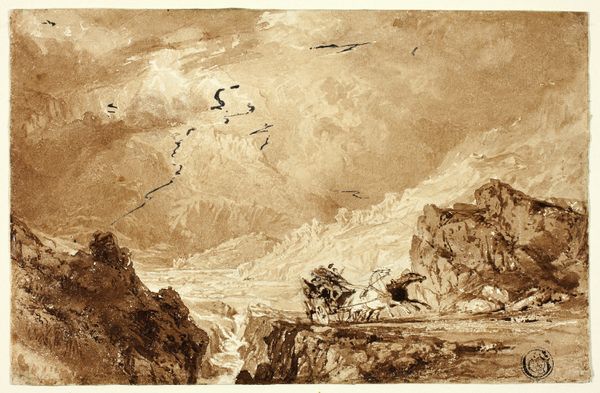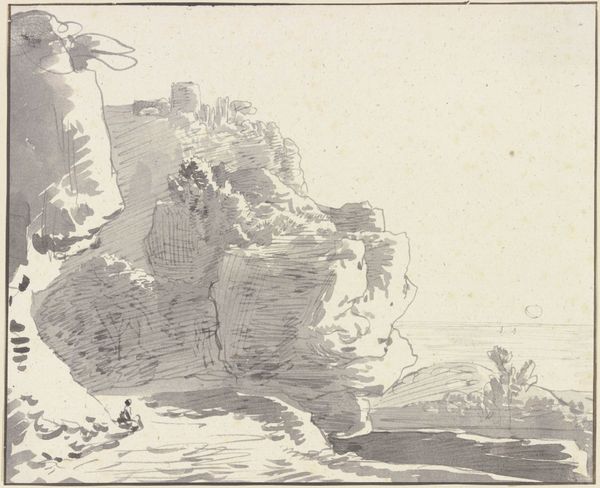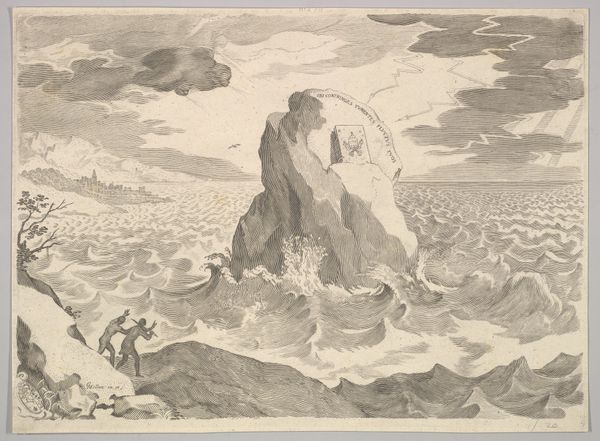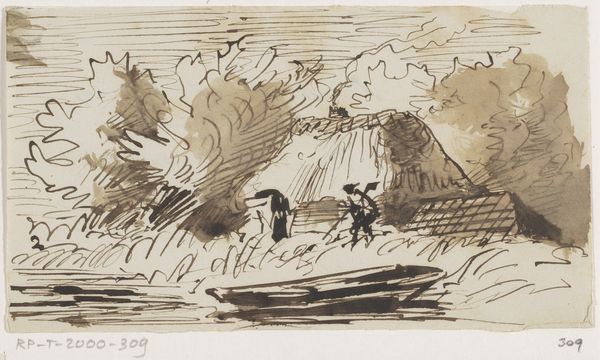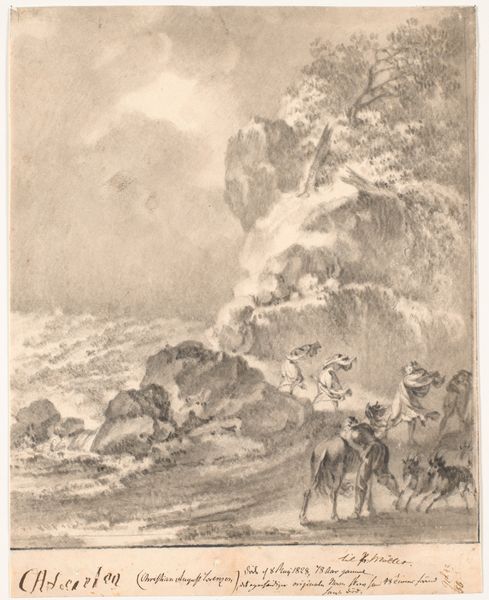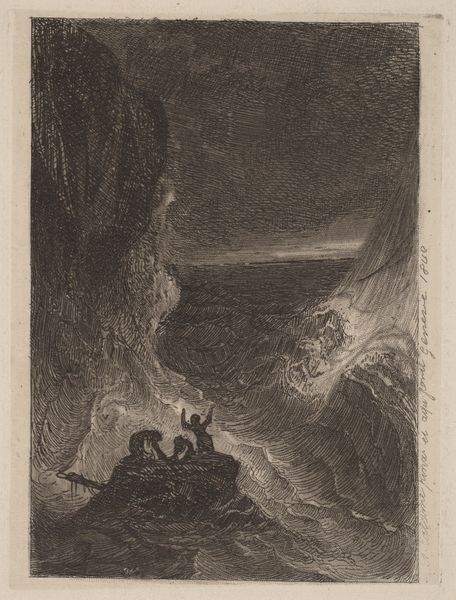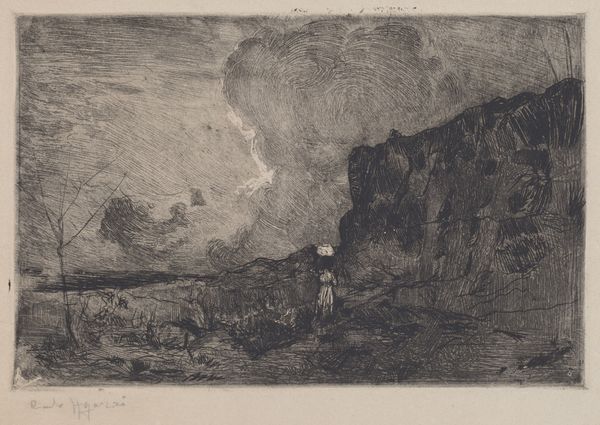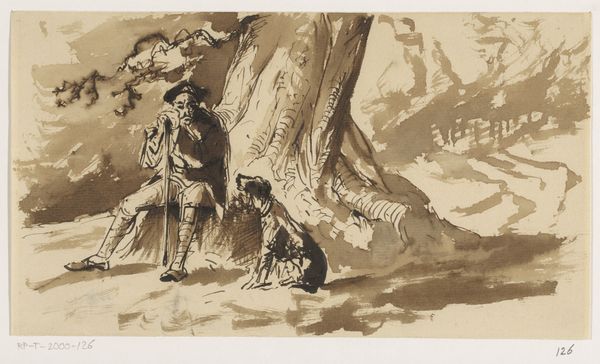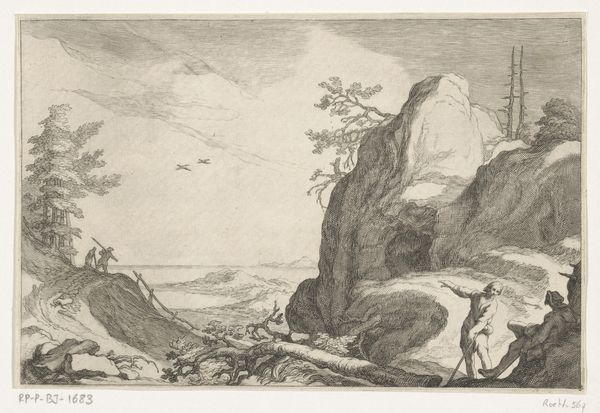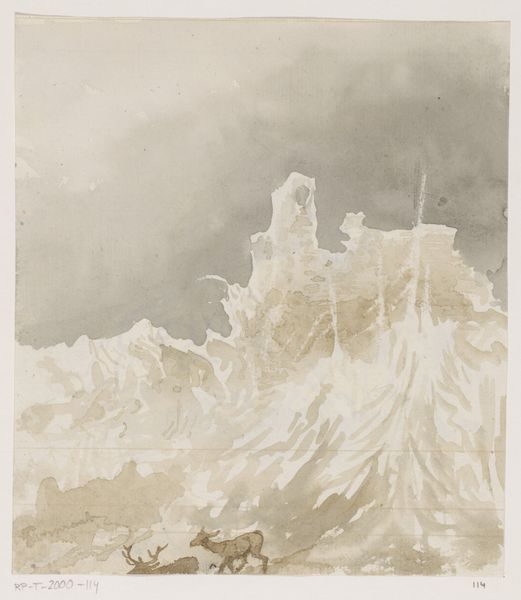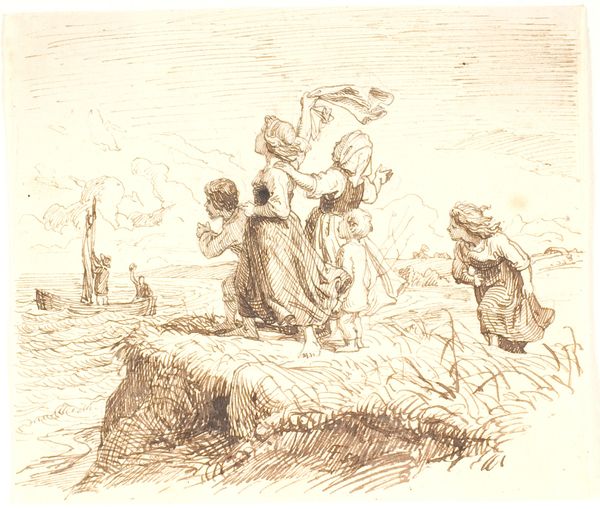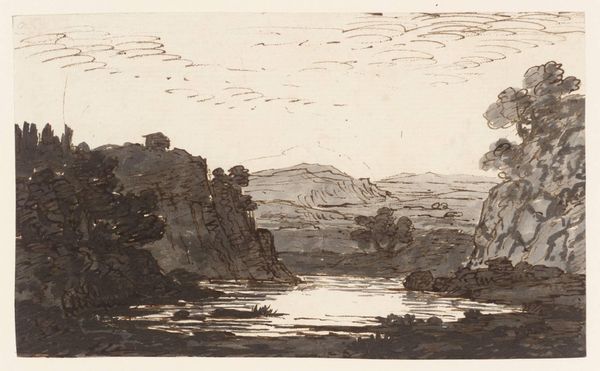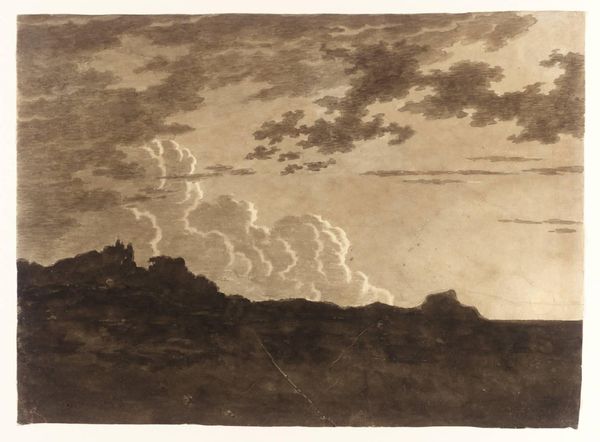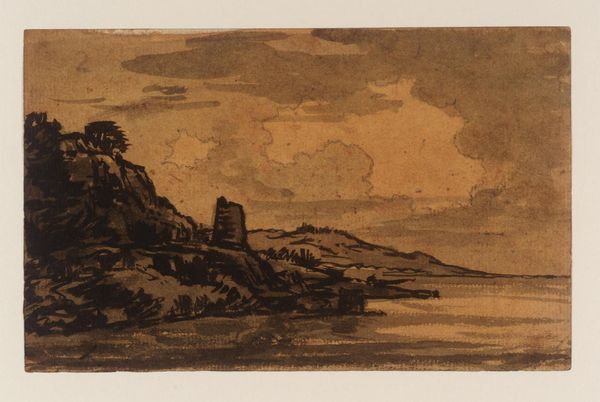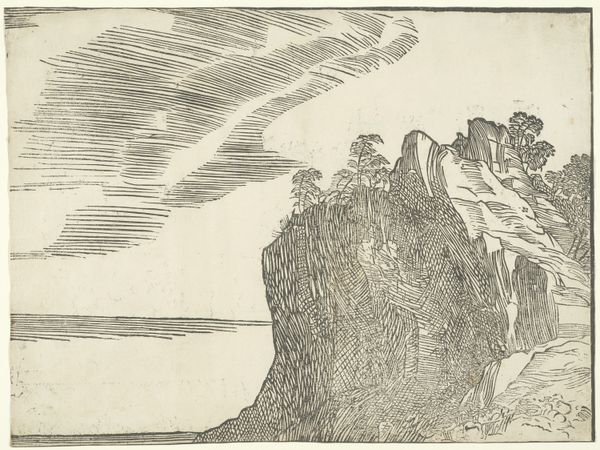
drawing, print, paper, watercolor, ink, pencil, chalk, graphite
#
drawing
#
narrative-art
# print
#
landscape
#
charcoal drawing
#
figuration
#
paper
#
watercolor
#
ink
#
romanticism
#
pencil
#
chalk
#
graphite
#
watercolour illustration
Dimensions: 110 × 179 mm
Copyright: Public Domain
Curator: John Constable, primarily celebrated for his landscapes, created this watercolor, ink, graphite, and chalk drawing titled "Woman with Baby Fleeing Across Moors." It is undated but resides in the collection of The Art Institute of Chicago. Editor: There’s an undeniable feeling of urgency to this piece. The monochromatic washes contribute to a sense of desolation and precariousness as the woman flees. Curator: Precisely! The desolate moor landscape itself functions symbolically. Moors in art often represent emotional wastelands or journeys through difficult terrain. The fleeing woman embodies the vulnerability and resilience found in romantic-era narratives. Editor: Given the sociopolitical context, I wonder what drove her flight. Was it poverty? Societal oppression? Romanticism tended to elevate the common person, imbuing their struggles with symbolic significance. Perhaps it speaks to a resistance to power, an assertion of the maternal bond in the face of harsh realities. Curator: That is an astute reading. The tower visible in the background, although distant, could signify the established order from which she is trying to escape, be that societal constraint, economic hardship, or political unrest. The swaddling of the baby evokes a Madonna figure – protective and unwavering even in peril. Editor: And the swirling, tumultuous clouds above aren’t merely atmospheric. They visually mirror the turmoil, reinforcing the narrative of disruption and highlighting a landscape that conspires with—or perhaps reflects—human suffering. It is really about how women persevere in crisis, isn't it? Curator: It is interesting that you see it as resistance while my attention is caught by a classical narrative of loss or forced journey. These visual tensions mirror social tension between Romantic ideal and the gritty reality. This contrast emphasizes the narrative, leaving us to fill the void of circumstance with our own perspective and perhaps memories, and to ask a very human question. Editor: This exploration highlights how much our readings of historical artworks depend on acknowledging their role in contemporary narratives, I see resistance to institutional control. But perhaps that is the beauty, isn’t it?
Comments
No comments
Be the first to comment and join the conversation on the ultimate creative platform.
